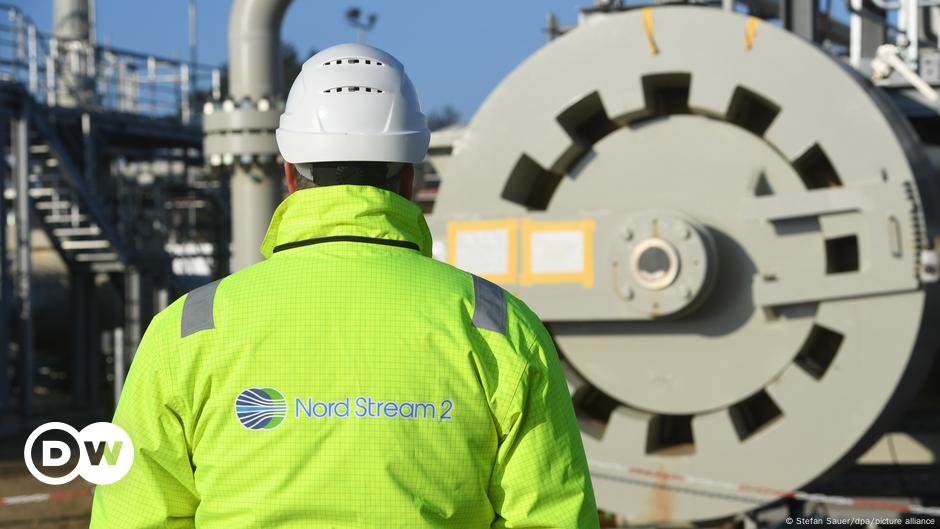In September 2022, six months after Russia began its large-scale invasion of Ukraine, the Nord Stream gas pipelines running through the Baltic Sea between Russia and Germany were damaged by underwater explosions.
Almost two years later, the German public prosecutor’s office is now searching for a Ukrainian suspect – who apparently fled back to Ukraine. A DW report on the course of events.
2005: German Chancellor Gerhard Schröder signs a declaration of intent with Russian President Vladimir Putin to build the Nord Stream 1 pipeline. The aim is to bring Russian gas to Germany via the Baltic Sea, bypassing transit countries. The first proposals for the idea date back to the 1990s.
2006: Nord Stream AG is founded to plan and implement the project. The Russian state-owned company Gazprom and several European energy suppliers are involved, as the Germans are not the only ones interested in the gas supply.
2010: Construction begins on Nord Stream 1, a 1,224-kilometer-long twin pipeline connecting Vyborg in Russia with the German town of Lubmin in Mecklenburg-Western Pomerania.
2011/2012: According to the operator, once the pipelines are operational, they will be able to supply Europe with gas for at least 50 years. According to Nord Stream AG, the construction costs totaled 7.4 billion euros (8.1 billion dollars at today’s exchange rate).
Russia annexes Crimea, project continues
2013: Planning begins for Nord Stream 2, two additional 1,250-kilometer-long pipelines that will run essentially parallel to Nord Stream 1.
2014: In March, Russia illegally annexes the Ukrainian peninsula of Crimea. However, German Chancellor Angela Merkel decides to continue with the pipeline project.
2015: The first contracts for Nord Stream 2 are signed. Gazprom and several European energy suppliers are once again involved.
Growing resistance in the EU and USA
2016: Ukraine, Poland and especially the Baltic states expressed reservations about the pipeline project from the outset, citing their own security interests. After the annexation of Crimea, they began to voice their concerns more vehemently. The EU is also issuing warnings. In the USA, too, resistance to the project has been growing since Donald Trump was elected president. Trump warns that Germany is becoming too dependent on Russian energy supplies.
The German government ignores all concerns and presents Nord Stream not only as a response to Europe’s energy security, but also as an instrument for securing peace through trade.
2018: Construction begins on Nord Stream 2. Merkel admits for the first time that this is not a purely private project and that “political factors must of course also be taken into account”. However, she is not yet considering stopping the project.
2019: The USA toughened its tone and threatened sanctions. Richard Grenell, then US ambassador to Germany, wrote threatening letters to German companies involved in Nord Stream.
2021: Nord Stream 2 is completed. Shortly after taking office in December, German Chancellor Olaf Scholz spoke out against stopping the project for political reasons. He described the pipeline as a “private sector project” that must be evaluated independently of the increasingly difficult relations with Russia.
Russia’s invasion of Ukraine changes everything
February 22, 2022:Against the backdrop of Russian aggression against Ukraine, Scholz orders the certification of Nord Stream 2 and thus the approval process to be suspended.
February 24, 2022:Russia begins its large-scale invasion of Ukraine and Nord Stream critics feel vindicated. Gas deliveries via Nord Stream 1 continue, but due to EU sanctions against Russia, the volume that member states receive is reduced.
July/August 2022: Russia shuts down Nord Stream 1, allegedly for maintenance reasons. Further delays mean that the gas continues to stop flowing. Gazprom blames a defective turbine. Later, gas deliveries will resume on a limited basis, but will stop completely at the end of August. Kremlin spokesman Dmitry Peskov says gas deliveries will not resume until sanctions against Russia are lifted.
Who had Nord Stream blown up?
26 September 2022: Both Nord Stream 1 pipelines and one of the two Nord Stream 2 pipelines are damaged near the Danish island of Bornholm. Germany, Denmark and Sweden are launching an investigation.
2023: Over time, various theories have been put forward about who might have been behind the attacks. The US investigative journalist Seymour Hersh claims, without evidence, that the US and Norway blew up the gas pipelines.
August 2024: Polish prosecutors say they have received a European arrest warrant from the German Federal Prosecutor’s Office against a suspect who is believed to be involved in the attacks. According to Tagesschau, this happened in June.
A Ukrainian named Wolodymyr Z., who according to Polish sources was last seen in Poland, is said to have left for Ukraine “at the beginning of July”.
The Polish public prosecutor’s office says that a formal error led to the Polish authorities not reacting sooner: Apparently, the German side had not made an entry in the Schengen system, which issues an alert when a person is registered against whom a European arrest warrant has been issued. The Polish border police were therefore unable to arrest Wolodymyr Z.
This article was originally written in German.

